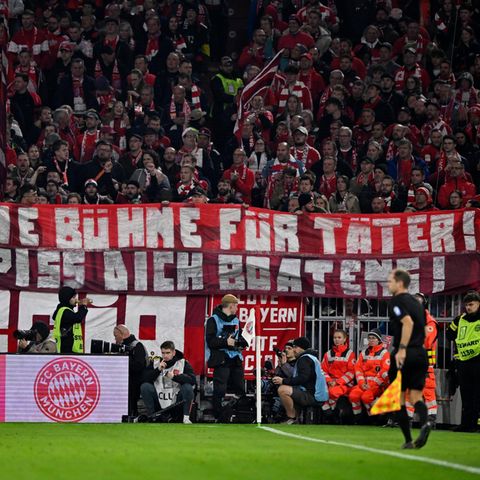The fulfillment of the objective of greater expense in defense of the Alliance will disturb the credit profiles of the community block.
“Achieve the objective of Trade War Tariffs of 3.5% of GDP will increase budget deficits and public debt throughout the EUweakening sovereign credit profiles unless governments consider a combination of spending cuts, tax increases and joint defense financing, ”warns the analysts of the European qualifier Scope Ratings, Alvise Lennkh-Yunus, Eiko Sievert and Brian Marly.
The content you want to access is exclusive to subscribers.
It is worth remembering that, at the recent summit of the North Atlantic Alliance, The EU Member States must assign, on average, an additional 1.3% of the GDP each year to cover the revised defense spending of 3.5% of the product, which would raise the annual expense in defense to more than US $ 600,000 million (compared to US $ 360,000 million). The widest 5% expenditure objective of NATO includes an expenditure of 1.5% of GDP in infrastructure, networks and industry related to defense. However, the budget impact in relation to income varies widely between countries, they point out from Scope.


For example, Germany assigned to date about 10.5% of its budget (1.2% of GDP) to military spending. To fulfill the previous objective of 2% of the GDP, the Government had a special fund for defense expenses of 100,000 million euros, agreed in 2022. After the constitutional amendment of the brake of the German debt in March 2025, the Government may finance a greater expense in defense through a greater debt issuance. Without significant budget reallocation, this would imply additional indebtedness of more than 100,000 million euros a year. “If Germany finance the additional expense without issuing a new debt, the country would face the greatest budgetary impact, of around 17%of the central government’s income. This figure is considerably higher compared to other large European economies such as France (8%), Italy (7%) and the United Kingdom (3%)”the qualifier technicians explain. In this regard, they emphasize that, without the agreed exemption of the objective of greater expense, Spain would have faced the second largest budget impact, of around 11.4% of the central government’s income. Similarly, due to its relatively reduced military budget, Belgium has also advocated greater flexibility to meet the new objective, since the country faces a high budgetary impact, of around 8.7% of the income of the central government.
“In absolute terms, the defense deficit of Germany’s defense expenditure remains the largest, and is around AU $ 106,000 million a year once the special defense expenses of 100,000 million euros, more than double that of Italy (US $ 46,000 million), France (US $ 45,000 million), the United Kingdom (U $ S41,000 million) and Spain (U $ 37,000 million),” Qualifier
Scope argues that the weakest fiscal metrics affect credit profiles, even if the EU fiscal norms will be more flexible. “Several countries are already struggling to reduce their budget deficits below 3% of GDP, in accordance with the EU fiscal standardsHowever, greater flexibility in the standards reduces the probability that more countries face excessive deficit procedures (PDE) as a result of a higher defense expend The shock of the defense spending, together with the countries that already meet or are close to the adjusted objective (Greece, Poland and the Baltic states) and/or countries with fiscal space such as Portugal and Member States with AAA rating.
MARKET WAR TARIFELES

The highest defense expense provided by the NATO of 3.5% of GDP will increase budget deficits and public debt throughout the EU.
Depositphotos
Markets and defense expense: What else does the Scope report say?
- It is important to note that our Debt forecasts are based on variable rates of increased defense expenditure. The governments of the Central and Eastern European region are expected to accelerate their efforts from the beginning, while the countries of southern Europe (such as Portugal and Italy) or those who face important tax restrictions (such as Belgium and France) probably adopt a more gradual approach. Spain’s decision to withdraw from the recent commitment to NATO shows this divergence in the perception of threats.
- From the perspective of the credit rating, any evaluation goes beyond compliance with fiscal norms. We focus on Attorney General of the country and, therefore, in the budget balances, the sustainability of the payment of interest and the trajectory of the debt in the medium term.
- A higher defense expense will lead to greater loans a deterioration of debt trajectories with respect to GDP in most EU countries And, therefore, to weaker sovereign credit profiles, unless governments reduce spending in other areas or increase income.
- Given the limited fiscal margin between several EU member states, security and defense financing could also move towards the European sphere. Centralizing EU safety and defense financing could provide more sustainable and coordinated financing between member states, while generating economies of scale in defense and security acquisitions. This measure would represent a significant political advance towards greater European integration.
- To address this problem, the EU adopted a regulation that establishes the Safety Action for Europe (SAF) initiative, which will provide An additional credit line of 150,000 million euros to Member States. Financed by debt issued by the EU, SAFE will offer loans to Member States with possible advantages in terms of lower financing costs and longest expiration terms, with a maximum duration of 45 years and a 10 -year grace period for capital reimbursement.
- The implementation of this program is expected to increase the issuance of EU bonds (662,000 million euros as of June 2025) and require that a major part of the EU budget is spent on interest reimbursements, especially from the next plurianual financial framework 2028-35.
- Other EU initiatives include the European Defense Industry Program (EDIF), which could provide 1.5 billion euros in subsidies by the end of 2027 And it would focus on improving cross -border cooperation in defense acquisitions, strengthening the supply chains of the defense industry and increasing manufacturing capabilities.
- The proposals also include the creation of a European Rearme Bank, based on institutions such as the European Reconstruction and Development Bank (BERD). This bank would be funded by a coalition of willing states (possibly NATO members, both from the EU and third countries) that would provide initial capital, which would allow the bank to mobilize its capital by issuing bonds. The bank could offer loans directly to governments for the acquisition of defense material and defense companies to expand their industrial capacity.
- Another proposal is the establishment of a defense, security and resilience (DSR) bank Wider, intended to support joint purchases, the increase in the scale of manufacturing and strategic storage between allies with related ideas, including transatlantic and Indo-Pacific partners.
Source: Ambito
I am a 24-year-old writer and journalist who has been working in the news industry for the past two years. I write primarily about market news, so if you’re looking for insights into what’s going on in the stock market or economic indicators, you’ve come to the right place. I also dabble in writing articles on lifestyle trends and pop culture news.




